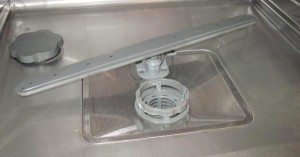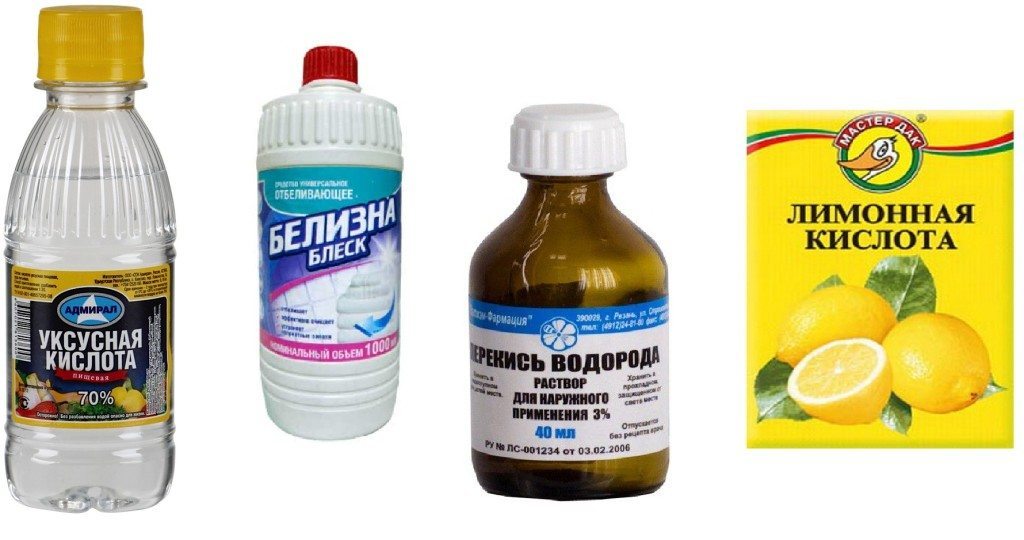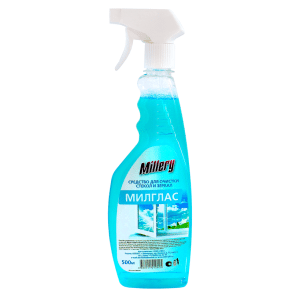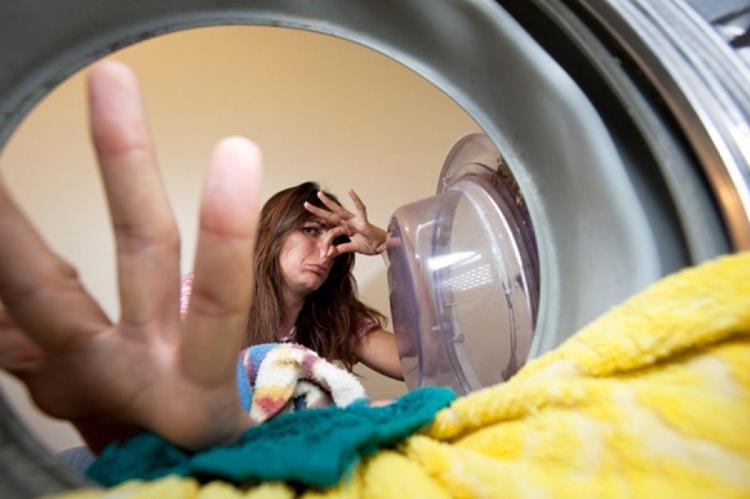How to clean the inside of a dishwasher yourself
 After using a dishwasher for six months or a year, people begin to think about how to clean it. Over time, a fairly large amount of dirt (mostly leftover food) accumulates in the dishwasher, which begins to decompose and emit an unpleasant odor. Add here colonies of pathogenic microbes and mold, and you get the main breeding ground for infection, threatening you and your household. So how can you clean your dishwasher and keep it clean in the future? We will talk about this in this article.
After using a dishwasher for six months or a year, people begin to think about how to clean it. Over time, a fairly large amount of dirt (mostly leftover food) accumulates in the dishwasher, which begins to decompose and emit an unpleasant odor. Add here colonies of pathogenic microbes and mold, and you get the main breeding ground for infection, threatening you and your household. So how can you clean your dishwasher and keep it clean in the future? We will talk about this in this article.
Cleaning the dishwasher from food residues
According to the instructions, dirty dishes must be cleaned of food residues before placing them in the dishwasher, but users usually either do not comply with this requirement at all or do so without due care. It’s not hard to guess what this leads to. Over time, food debris clogs the garbage filter, drain grate, drain hose, door and other internal parts. In principle, if you are too lazy to thoroughly clean the plates of food debris every time before washing, you don’t have to do this, but keep in mind that in this case, you will have to wash the washing machine more often.
There is nothing complicated here. If you use your dishwasher every day, then “general” cleaning should be done once a week. If the machine is used less often, then expect that cleaning should be done after 7-10 loads of dishes. So, how do you clean your dishwasher from food debris and other dirt accumulated inside?
- Turn off the water and unplug the power cord from the outlet; the “dishwasher” should be completely de-energized.
- Open the door completely and remove the dish baskets and cutlery containers from the tank.
- Pour water into a deep basin or even a bathtub, dissolve dishwashing detergent in it and soak the dishwasher baskets removed from the dishwasher in it. In 30-40 minutes, soak off the grease and dirt thoroughly.
- Let's move on to the dishwasher tank. We inspect the filler holes, if dirt has stuck to them, clean it very carefully, you can use a thin wire for this.
- We take a rag made of coarse cloth, an old toothbrush and a little concentrated dishwashing detergent and begin to wash the ends of the door and the inner walls of the tank, not forgetting to periodically apply a little detergent to the rag. Regular dirt (with the exception of mold stains) and grease deposits can be washed off perfectly in this way.
Important! The inner walls of the dishwasher tank are made of stainless steel, but you should not use abrasive cleaners to constantly clean them. Use such chemicals only as a last resort.
- We remove the sprinkler bar and wipe it from dirt with the same rag with detergent.
 Next, unscrew the garbage filter and remove the mesh; they also need to be washed thoroughly.
Next, unscrew the garbage filter and remove the mesh; they also need to be washed thoroughly. - Now we pour clean warm water into a bucket or basin, take a sponge and rinse the walls of the tank from any remaining product, then put the mesh in place and screw the garbage filter back in.
- We take out our soaked dish baskets, wash them thoroughly with a sponge, and then rinse them in clean water and put them back in place. The “general” washing of the dishwasher is completed.
What to do if there is mold?
If, when inspecting the dishwasher tank, you find stains of black mold, then in this case you will need “heavy artillery”; simple cleaning with dishwashing detergent will not work. First, assess the extent of mold damage to the dishwasher; the more mold there is, the more concentrated the product will be needed. How to clean mold from a dishwasher at home?
- We take a bottle of hydrogen peroxide from the pharmacy, bring it home, and generously moisten a rag with it.
- Then thoroughly wipe the mold stains themselves and the areas around them with peroxide.
- Let the dishwasher sit for 1.5-2 hours.

Note! If possible, keep the dishwasher door ajar to prevent mold from forming.
- We take a bottle of the cheapest “Whiteness”, soak a rag in it and again wipe the places where mold fungi accumulate. Don't forget to wear rubber gloves when working with chemicals.
- We wait another 2-3 hours, then rinse the dishwasher with warm, clean water.
If this method does not help to completely get rid of mold, it means either you have incorrectly assessed the area affected by the fungus, or you need to repeat the chemical treatment, but keep it longer, for example 5-6 hours. You can also additionally treat mold stains with concentrated acetic acid.
Be careful! If mold has formed on rubber seals, membranes and other “delicate” materials, vinegar essence cannot be used. Stainless steel walls will withstand such execution.
How to clean the outside of the dishwasher?
 From a technical point of view, the condition of the outer surfaces of the dishwasher does not affect its performance, but this does not mean that the outer part of the housing should become covered with dirt.The control panel of a Bosch dishwasher (or another brand) should be cleaned with glass cleaner. In principle, it can be used to care for all external surfaces of the “dishwasher”, because it is convenient to use and does not leave dirty stains.
From a technical point of view, the condition of the outer surfaces of the dishwasher does not affect its performance, but this does not mean that the outer part of the housing should become covered with dirt.The control panel of a Bosch dishwasher (or another brand) should be cleaned with glass cleaner. In principle, it can be used to care for all external surfaces of the “dishwasher”, because it is convenient to use and does not leave dirty stains.
If there are stains of grease or other dirt on the outer surfaces of the dishwasher, you can pour a little dishwashing detergent on a cloth and apply it to the stains. After 10-15 minutes, wipe the product off the surface along with the dirt. After this, you can treat the walls with glass cleaner and wipe everything clean.
Important! Do not use products containing alkalis, hydrochloric or sulfuric acid to clean the external surfaces of the dishwasher. For example, you cannot use such products as “Whiteness”, “Domestos”, “Shining Bathroom” and the like.
How to rid a heating element of scale without disassembling the machine?
Dirty deposits, mold and grease stains are not the only scourge of a dishwasher. Even if you keep your “home assistant” perfectly clean, it can still fail. The fact is that due to excessively hard water, a layer of scale forms on the heating element, which, accumulating over time, can damage the heating element and send your “dishwasher” to a repair shop or even to the scrap yard.
To rid your dishwasher of scale, it is necessary to carry out periodic preventative cleaning with citric acid. Intrusive advertisers offer consumers not to remove scale, but to prevent it by softening the water with special anti-scale agents, such as Calgonit and others.A person buys expensive capsules, sincerely hoping that the scale problem has been removed for him, and then suddenly it happens that during the washing program The water in the dishwasher does not heat up and it turns out that the heating element is out of order.
Most dishwasher repair specialists strongly discourage the use of water softeners. Such products are effective only for their manufacturers, since they bring enormous profits; they will not protect the “dishwasher” from scale. It is quite enough to pour 200 g of citric acid into the detergent tray once every six months and run the washing program idle. This will be quite enough to get rid of a small layer of scale. And most importantly, everything is cheap and cheerful!
Note! If you have not cleaned your dishwasher with citric acid for several years, and the tap water is hard, it would be wiser to do 2-3 cleanings at intervals of 1-2 days.
In order for the dishwasher to serve for a long time and break down as little as possible, it is necessary to properly care for it. It is important to clean it from time to time from dirt, grease, mold, and also to “fight scale” and then your “dishwasher” will always smell nice, and the dishes will come out perfectly clean.
Interesting:
10 reader comments





















What nonsense.
The washing machine is 7 years old, I have never washed it, it is clean!!!! The dishes are washed in it every day and the inside of the machine itself is washed.And I will never pre-soak dishes or carefully scrape off any leftover food (of course I’ll throw out anything large, like banana skins or eggs).
Once every 3 months I add salt, the filter is nearby, if something like a fish or cherry or chicken bone is stuck in it, then I pull it out... I repeat, once every 3 months, why go there more often?
Mold? Where is she from??? Hello, people, to prevent mold from growing, you should leave the washing machine door ajar if you don’t use it every day (if every day mold doesn’t start... it’s hot for mold at 60 degrees every day). The same applies to the washing machine... i.e. Dry the washing machine itself after washing and washing.
I also don’t have mold in my washing machine and never have had it. I still open the door. You never know. In my Indesit, excess moisture is not needed. It needs to be cleaned - that's for sure. Not often, but necessary.
I also leave the door ajar, because that’s what the instructions say. There is even a special drawstring on the mount so that the door is automatically locked slightly open to the thickness of a finger (there are also some kitchen stoves). And before loading, I still remove dirt using the express method - I spray it with hot water using a shower head. And never any food residues in the filter (no seeds, no flakes). In general, it is better not to delay washing and not to let dirty dishes dry out. If there is a big lunch, immediately spray the used dishes with a stream and put them in the machine, and when they are full, turn them on.
I completely agree with the previous comment; in general, it is better not to have a dishwasher, or not to use it.
The machine must be opened slightly after washing! Turn on your brain! If there is no way out of moisture, then it will spread everywhere.... even in my head!
The door has never been left ajar and there is no mold. The dishwasher is 6 years old.
This is my second dishwasher, I’ve been using them for 20 years already, I wash the filter once a month, once every six months there’s a special cleaning product, especially inexpensive (from 150₽). There is a complex against scale, grease, odor, etc. I never leave the door open, there has never been any mold. After drying, both the dishes and the machine are already dry! I use it every day. Bosch machine.
Here's another way - to periodically drive the washing machine idle.
The machine is 10 years old, it started washing with white stains. Cleaning didn't help.
I don’t really understand the hassle if a special cleaning product is invented. Moreover, it is inexpensive. Maybe you can also make homemade washing tablets? Then it’s easier to wash the dishes by hand.